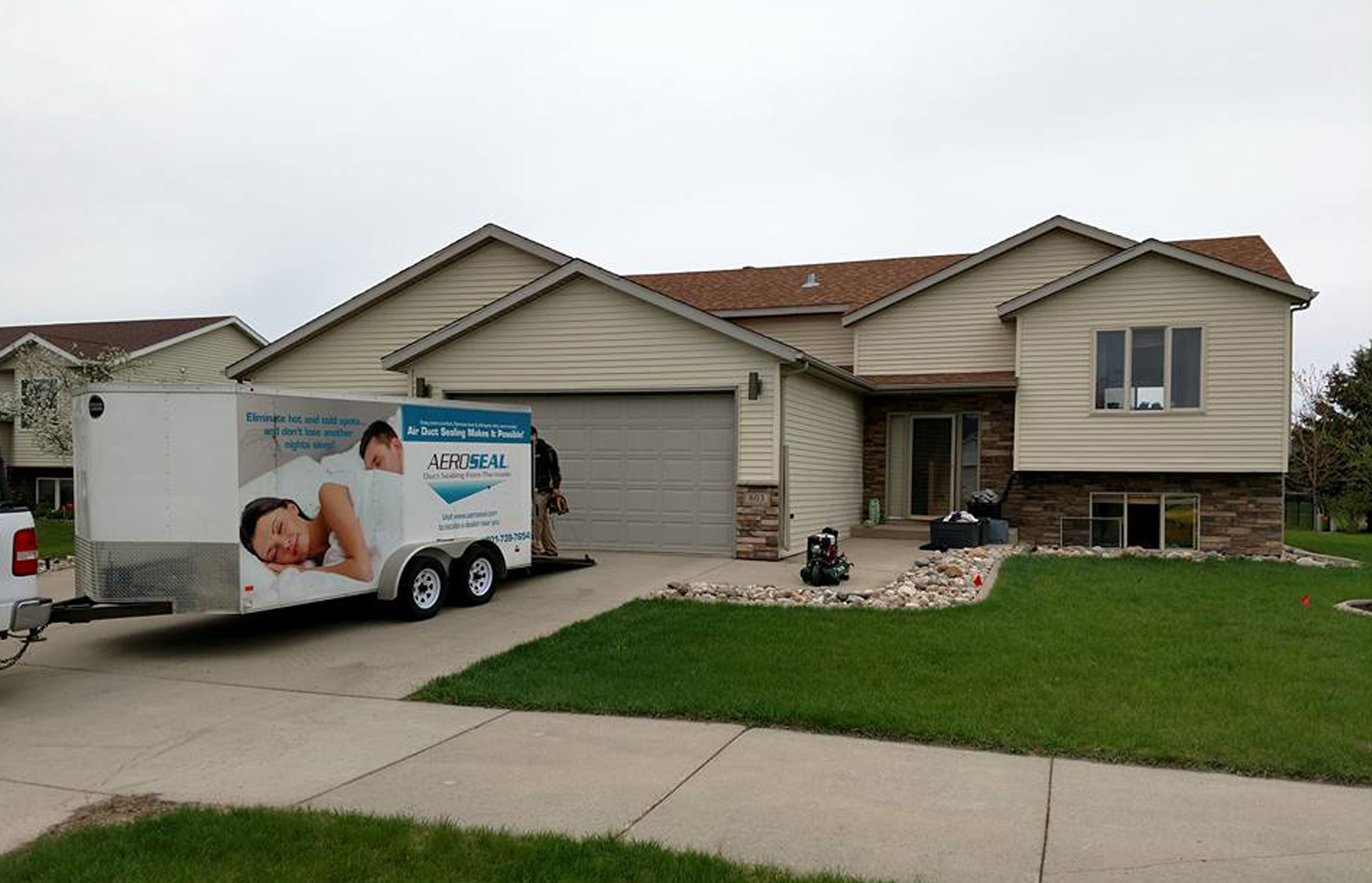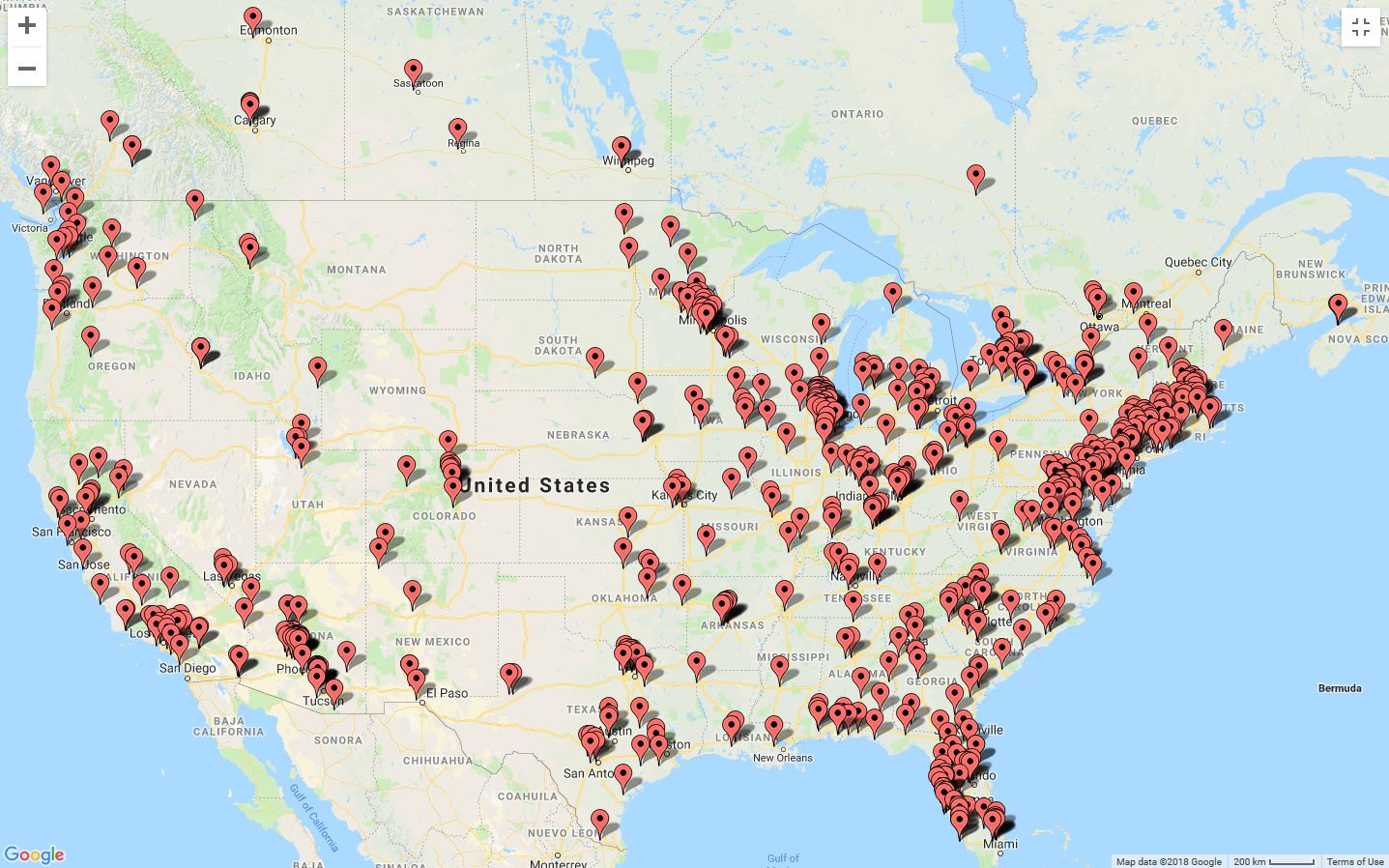13 Questions Homeowners Ask About Aeroseal

Do you have questions about Aeroseal? Awhile back, we published top 10 questions still asked about Aeroseal. Here’s part two of questions that both homeowners and contractors ask us about Aeroseal duct sealing in homes.
We skimmed across the world wide web for questions being asked and answered throughout the global Aeroseal contractor network.
What is Aeroseal?
Aeroseal is a duct sealing technology that improves the efficiency of heating and cooling equipment. It’s made up of polymers, long molecules that bind together, and seals up leaks, holes or misalignments in your ductwork. It uses synthetic nanoparticles, which are tiny particles that are specially manufactured to fit together and create a way to block air from escaping, to make your ducts as airtight as possible.
What is the Aeroseal Duct Sealing Process?
Your local Aeroseal service provider (e.g. HVAC contractor) blocks and tapes off all the grills and registers in the home with pieces of foam. The Aeroseal machine is then hooked up to the ductwork near the furnace. After everything is blocked and the machine is hooked up, the furnace is sealed off to protect heating and cooling components. Then, the machine begins to blow an atomized polymer into the ductwork. The sealing particulates go to the leakage points (joints, seams, gaps) in the ductwork and attach themselves to the edge of the opening and begin to build a seal.
What are the Benefits of Sealing Ductwork with Aeroseal?
Enjoy better home airflow which results in a cleaner, healthier, and more comfortable home. Here’s a list of common benefits homeowners say they achieve after sealing their homes’ ductwork systems with Aeroseal:
- Increase Your Comfort
- Lower Energy Consumption
- Improve Air Quality
- Pre & Post Leakage Measurements

Furthermore, sealing your duct work is the best home improvement you can make from an energy standpoint. Aeroseal can reduce duct leakage by up to 90%, reduce your energy use by up to 30%.
Why Do You Need to Seal Ductwork?
Leaking air ducts not only waste energy, they cause a lot of other airflow problems in homes and buildings as well. Here are just a few of them:
- Musty smells
- Rooms that feel too cold or hot
- Too much humidity
- Energy bills that are excessively high
- Excessive dust accumulation
Is the Aeroseal Duct Sealant Safe?
Its ingredients are those commonly found in hairspray and chewing gum. In other words, yes, it is very safe.
Most telling is that Aeroseal has been used at some of today’s most prestigious medical facilities – from the Mayo Clinic to Nemours Children’s Hospital. Day-to-day operations at these facilities often remained virtually uninterrupted during its application. It doesn’t get much safer than that as a certified nontoxic by the Occupational Safety and Health Administration (plus UL approved).
Does Aeroseal Have an Odor?
At the time of application, there is a very mild odor, similar to that of Elmer’s glue. This dissipates completely within a few hours.
If you have a family member with asthma or allergies, you may be concerned about adding a chemical odor to your home. To avoid the smell completely, you can plan to leave your home for a few hours after the sealing process to run errands while the smell dissipates.
How Long Will the Duct Sealant Last?
Aeroseal duct sealant has a ten-year warranty – but don’t confuse that with lifespan, which is much longer. Accelerated testing conducted at Lawrence Berkeley National Laboratory resulted in Aeroseal showing no sign of deterioration in the aeroseal seals – and it continued to seal much past the life span of tape and mastic. It has been durability tested to over 40 years. It exceeds all UL standard tests for durability. So the guarantee – the strongest warranty in the industry – covers the contractor for 10 years for parts and labor for any failure in Aeroseal seal but Aeroseal seal itself has proven to last for decades.
Does Ductwork Need to be Cleaned Before Sealing?
In most instances, duct cleaning is not required prior to duct sealing. Your local home services or HVAC contractor can advise whether it will be necessary to clean your ductwork prior to sealing.
Does the Duct Sealant Coat the Inside of the Ductwork?
No, it only sticks to the holes in the air ducts without coating the rest of the duct.
Does the Duct Sealant Become Brittle?
No, the vinyl sealing material remains rubbery, never cracking.
What Does Aeroseal Cost?
Costs vary depending on a lot of details. Here are some factors that influence the cost of your air duct sealing:
- The size of your home
- The location of your home
- The scope of the job
- Whether you choose a manual or an aerosol system
- Other local heating, ventilation, and air conditioning (HVAC) variables
Contact your local HVAC contractor to receive a customized cost estimate for Aeroseal duct sealing.
Will Aeroseal work on my in-slab air ducts (ductwork)?
Yes, Aeroseal can be used to seal sheet metal HVAC duct incased in concrete slabs under the right conditions. The duct interior surfaces cannot be wet or hold standing water as the seals will soften and degrade over time if submerged or in contact with water. The ducts need to be relatively clean with <1/8” of debris buildup on the interior surfaces.
Note Aeroseal is not an encapsulant and is not intended for use as an encapsulant or as a water barrier. It is also not intended as a repair for failing in-slab ductwork.
Aeroseal seals air leaks in air ducts to help improve the air deliverability of heating, ventilation, and air conditioning (HVAC) equipment.
How Can I Get Aeroseal?
Call your local heating and cooling contractor (HVAC contractor) and ask for Aeroseal duct sealing. Not sure who offers Aeroseal duct sealing in your area? Find an Aeroseal dealer near you. Call us 937-428-9300, email us, or leave a comment below.














